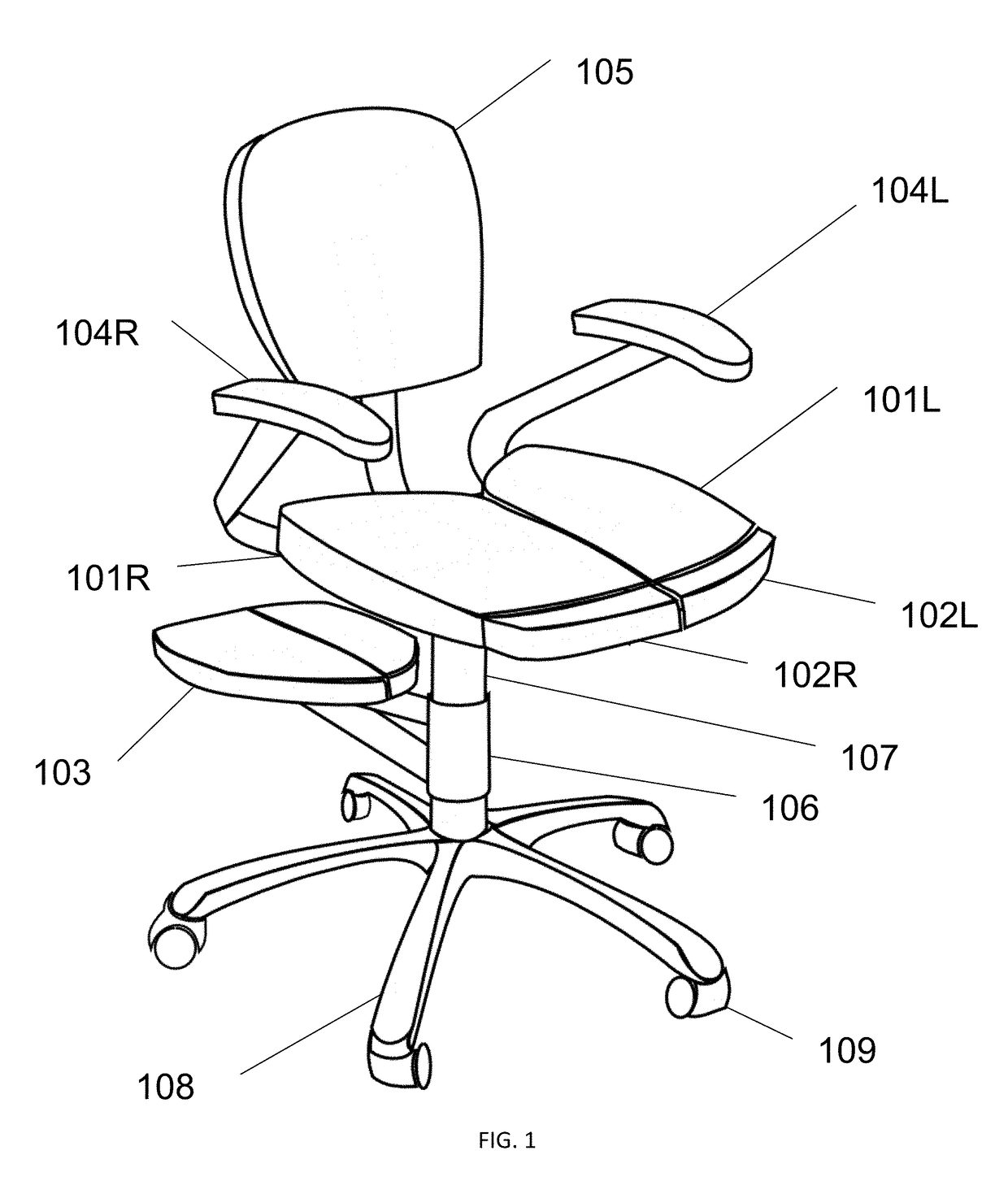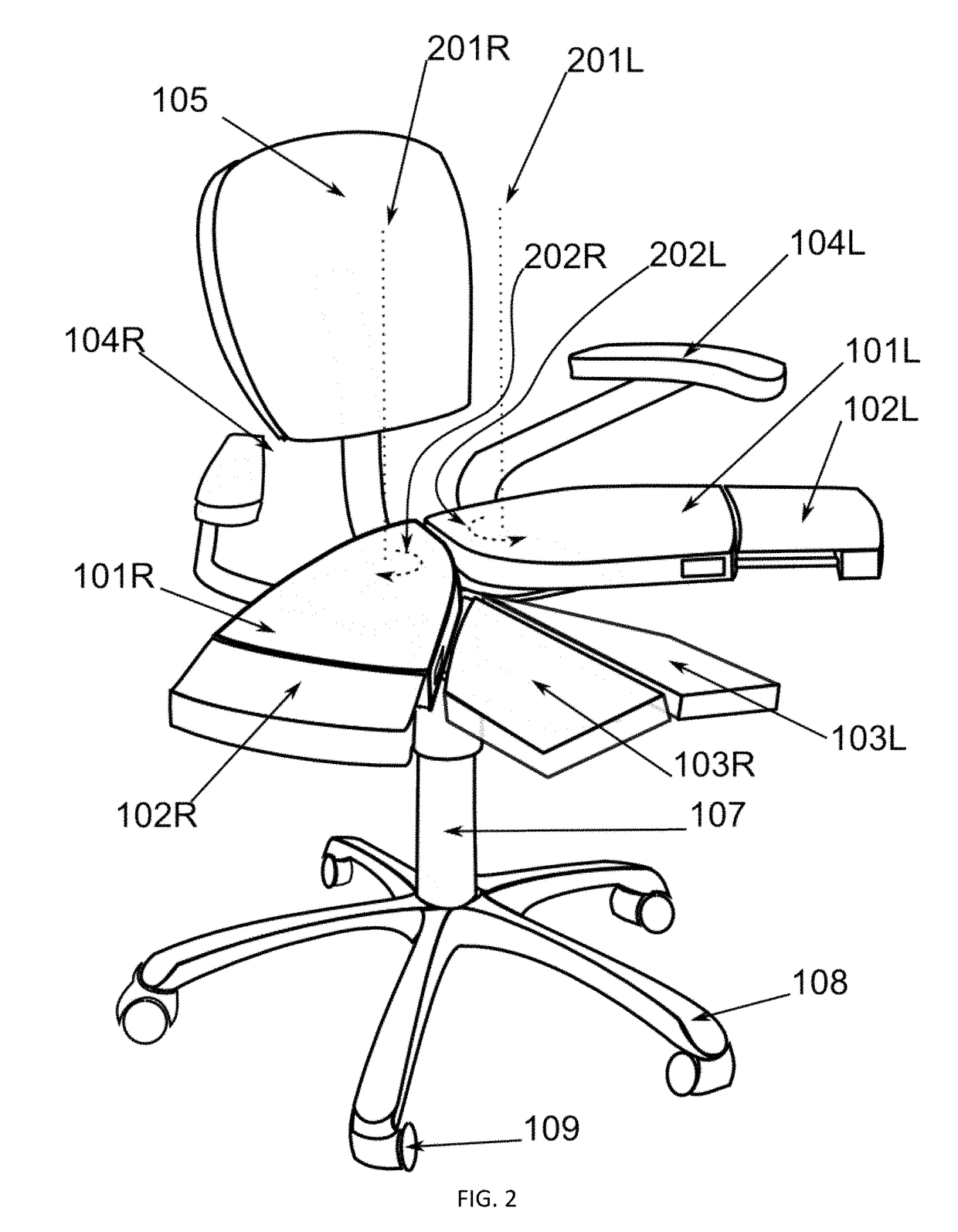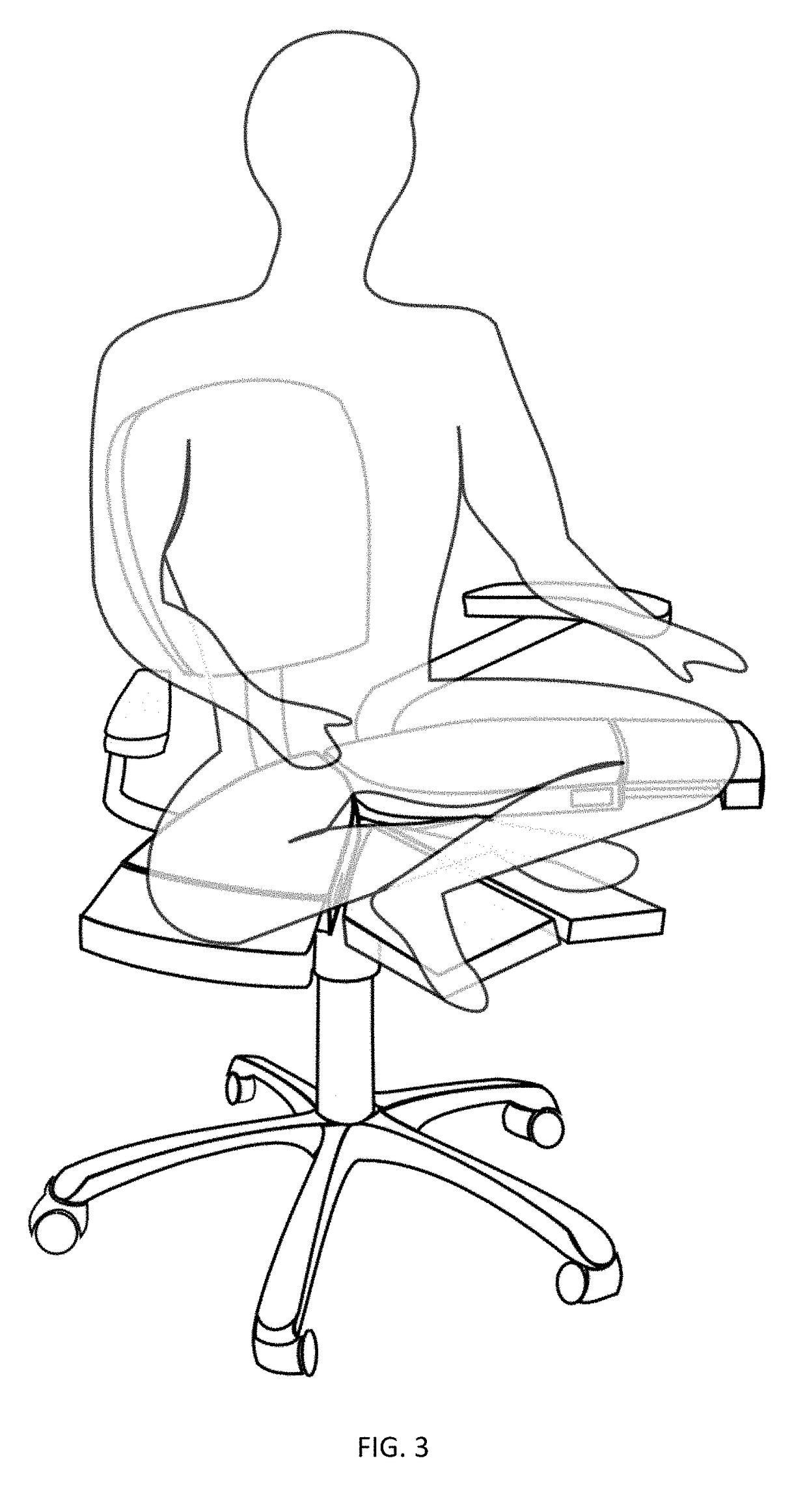Chair that adapts to multiple sitting positions
a seat and seat technology, applied in the field of chairs, can solve the problems of poor posture, back pain and other discomfort, poor comfort of cross-legged seating position, and inability to adjust to multiple sitting positions, and achieve the effect of maximizing comfor
- Summary
- Abstract
- Description
- Claims
- Application Information
AI Technical Summary
Benefits of technology
Problems solved by technology
Method used
Image
Examples
Embodiment Construction
[0018]Referring now to the drawings, FIG. 1 shows a perspective view of an adaptable chair in accordance with an embodiment of the present invention in a first configuration, for example a conventional seating position. The numbering scheme for the Figures uses the notation ‘R’ and ‘L’ following the number of a component to indicate the Right and Left sub-components, respectively, of those components which have two symmetric sub-components such as the seat 101L and 101R. The adaptable chair includes a conventional cushioned backrest 105, and armrests 104L and 104R, and a seat assembly 101L / 101R, 102L / 102R. Each of these components and sub-components that interface with the user including 101, 102, 104, 105 may be constructed of a single rigid material such as wood, metal, plastic, or a combination such as a metal frame with plastic mesh. These components may also optionally include additional materials on their surface to enhance comfort, such as foam, bunting, or similar cushioning...
PUM
 Login to View More
Login to View More Abstract
Description
Claims
Application Information
 Login to View More
Login to View More - R&D
- Intellectual Property
- Life Sciences
- Materials
- Tech Scout
- Unparalleled Data Quality
- Higher Quality Content
- 60% Fewer Hallucinations
Browse by: Latest US Patents, China's latest patents, Technical Efficacy Thesaurus, Application Domain, Technology Topic, Popular Technical Reports.
© 2025 PatSnap. All rights reserved.Legal|Privacy policy|Modern Slavery Act Transparency Statement|Sitemap|About US| Contact US: help@patsnap.com



